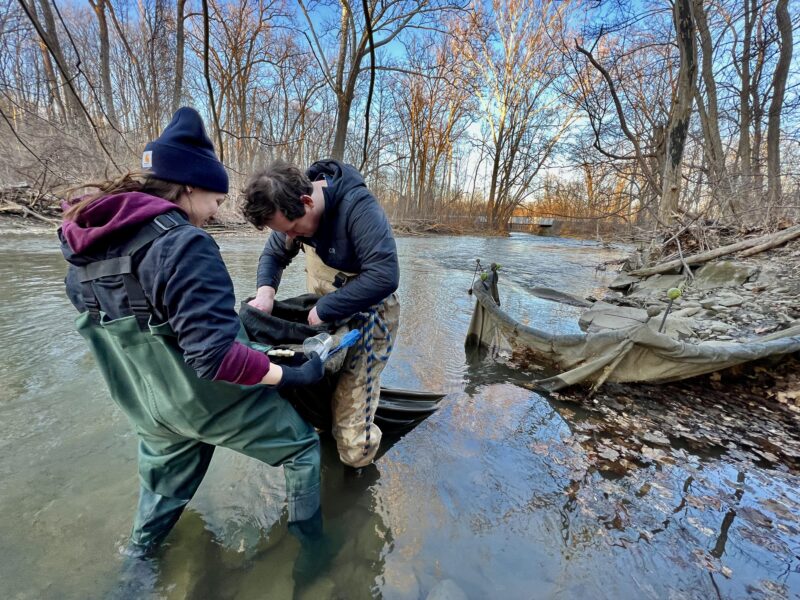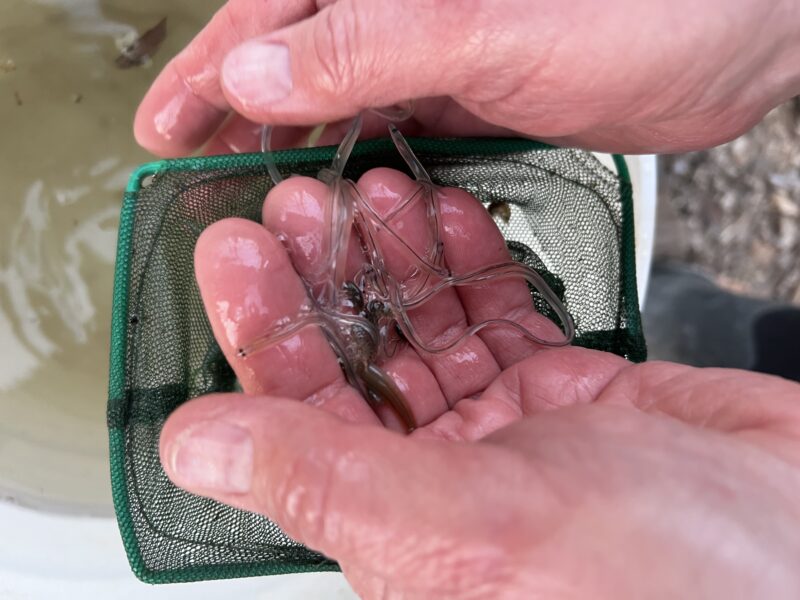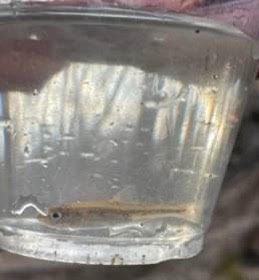
Every spring volunteers up and down the Hudson River wade into the chilly waters to study juvenile eel migration. The slippery, slimy, little species is vital to the health of a river. As they grow they also become a vital food source for many fish. The study is part of an annual volunteer effort coordinated by the NYS DEC and the Cornell Cooperative Extension of Columbia and Greene Counties.

During our walk along Hannacroix Creek, one of only 13 sites between Staten Island and Troy, we met up with the site’s project lead Lindsey Anne Strehlau-Howay. Lindsey works for the Cornell Cooperative Extension of Columbia and Greene Counties. The day’s volunteer, Daniel Fleischman, also dressed in warm, waterproof layers, helped to ready the gear needed to do this important work.
The two of them stood knee-deep in the chilly waters bubbling with excitement. They had just discovered that their net had yielded a treasure trove of tiny, transparent fish referred to as “glass eels.”
“One, two, three… yup, we got eels!” beamed Lindsey, as she scooped up handfuls from deep within the housing she installed two weeks prior. The nets will stay in the water for about six to eight weeks.
“Do you mind handing me one of those buckets?” she asked CAC Chair, Barbara Heinzen. Barbara is the nearby homeowner that works hard to protect the rare tidal estuary at constant risk of industrial pollution.
Heinzen pulled the pail up the steep bank and reached into the bottom of it with a small scooper. As she started counting, she tried to snag one of the brown varieties. “Those are called elvers. They are a bit older than the others.” Barbara tallied up 20 letting them flip-flop into another pail. A total of 450 squirmy noodles were counted including an unidentified fish in the net (see last photo below). If you know what it might be, contact Lindsey.
Overall, the species is in decline and that never bodes well for a watershed already struggling from illegal dumping, dredging at the Port of Coeymans, and heavy marine traffic. Environmental conditions also determine calculations every year. After counting the sampling, the little specimens are released back into the river unharmed by their careful methodology.
For those interested in becoming a volunteer, there are spots still open between now and April 15. The volunteer sign-up sheet will show two weeks at a time but the season will last into May, possibly June.




